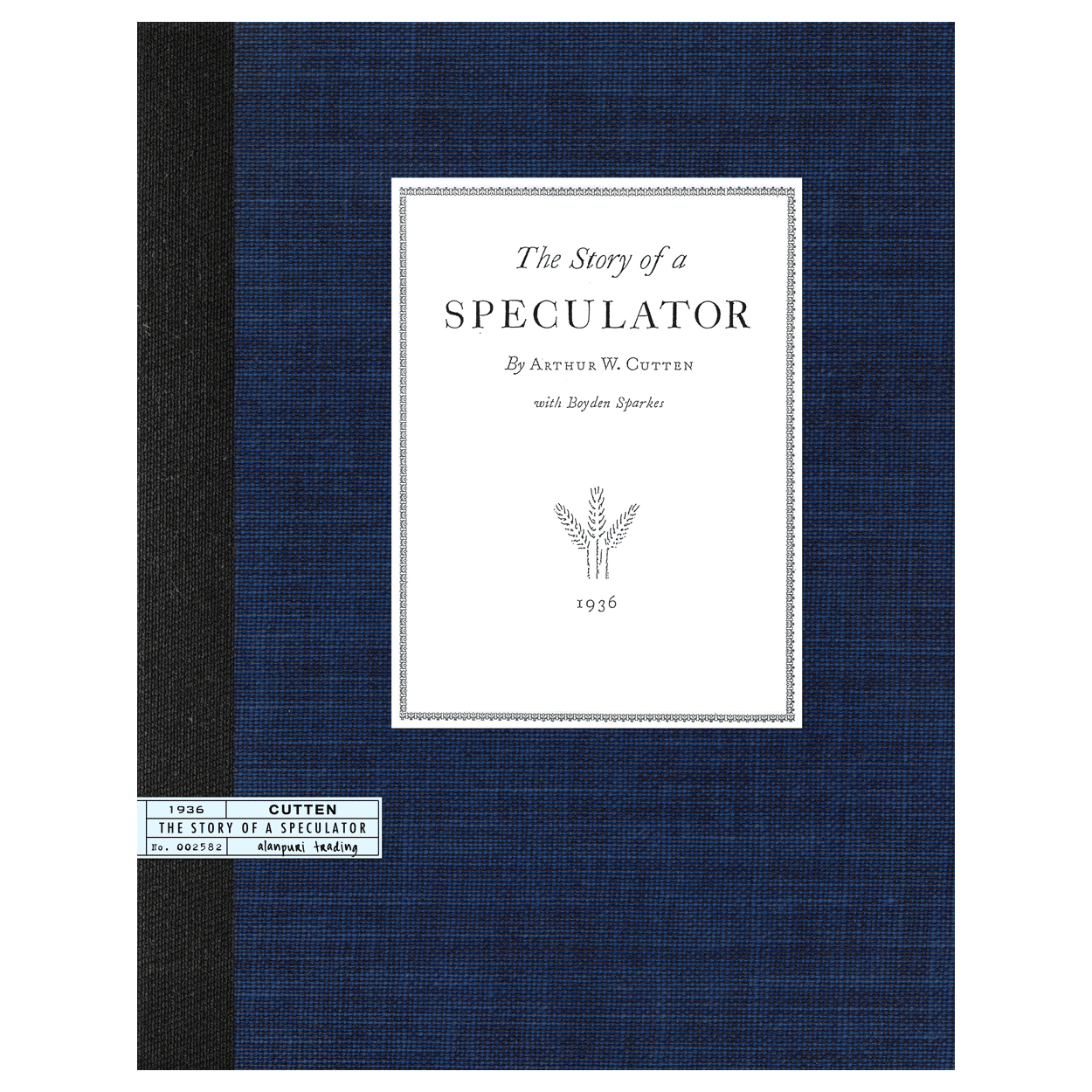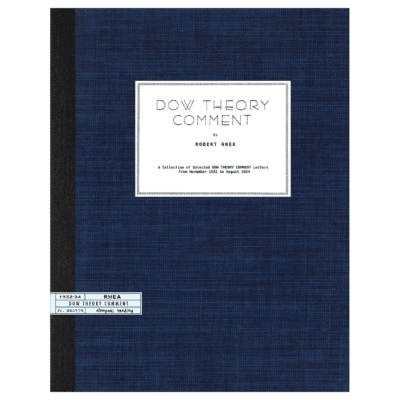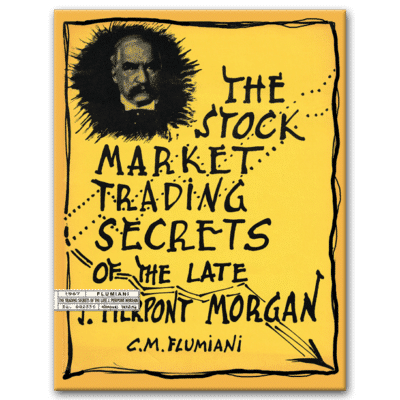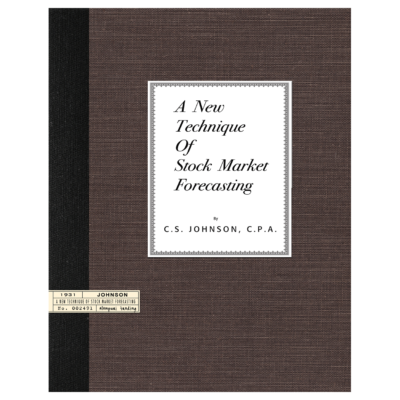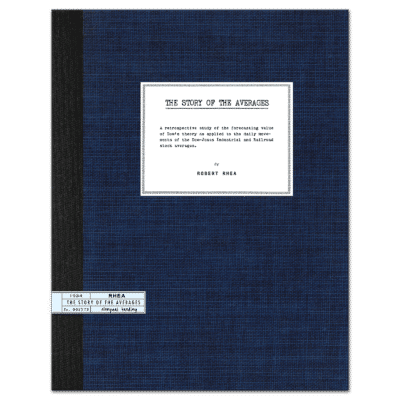Description
The Story of a Speculator by Arthur Cutten
Alanpuri Trading, Los Angeles, CA, U.S.A., 2013. Softcover, Reprint, Exact Facsimile Reprint of the Original 1936 First Edition. (Originally self-published by the author in 1936), 88 pp.
Contents: Autobiography of the author, a trader who traded the largest number of wheat contracts of any trader in history. A spell-binding detailed account of the author’s experiences in trading and observing the industry from the time he arrived at the Chicago Board of Trade building in 1890 to the end of his career in the early 1930’s. About the Author: Cutten’s first major market success is said to have been in 1906, in Soo Line rail stock in which he made a profit of $220,000. A Canadian Press report describes how Cutten cornered the wheat market in 1924: “Forearmed with the knowledge of weather and crop conditions, he foresaw an impending world grain shortage.he bought grain futures slowly and unobtrusively and held them as prices climbed rapidly, eventually reaching more than $1 a bushel over normal price in eight months. Estimates of his profits ranged from $12 million to as high as $30 million.” Not all of Cutten’s time was spent in Chicago’s corn pit. In 1925, Cutten moved his market operations to the New York Stock Exchange. In 1928, Cutten was reportedly involved in a gigantic investment scheme headed by the seven ‘Body by Fischer’ brothers of Detroit. From this, Cutten was said to have made, at one time, a paper profit of more than $50 million. Some years before his death in 1936, Cutten described himself as “a cash grain merchant and dirt farmer.” He was far too modest. The dirt farm was an 800-acre estate located 25 miles from downtown Chicago. As to being a ‘cash grain merchant’, one wonders if Cutten wasn’t being ironic in his use of the word ‘cash’. The great stock market collapse happened when speculators turned out not to have the cash necessary to pay for their high flying ventures. After his death, Cutten’s Will was officially proven and it seems his estate was worth only slightly more than $350,000. The terrible depression of the 1930s set in after the stock market crash. Not unreasonably, people felt these two events to be somehow related. They demanded to know who was to blame for these disasters. In 1933, Cutten and other famous market speculators were summoned to Washington to participate in the Stock Exchange Practices Hearings. With much tongue in cheek, the economic historian John K. Galbraith claims that ”as a market operator, Arthur Cutten surmounted substantial personal handicaps. He was very hard of hearing, and some years later, before a congressional committee, even his own counsel conceded that his memory was very defective.” ” Cutten was not the only Wall Street tycoon whose hearing and memory proved defective at the Stock Exchange Practices Hearings. The hearings showed that in 1929, more than 100 issues of stock on the NYSE had been subject to manipulative operations. The same games had been played in 1928. Radio stock, in which Cutten invested heavily, went from $85 to $420 – and this without ever having paid a dividend. Although few outside of the wheat markets remember Cutten, his story is compelling and memorable, giving us another look at the days when one man was capable of cornering a commodity market. Reprint, EXTREMELY SCARCE, Highly Recommended. 88 pp.
The Story of a Speculator by Arthur Cutten

